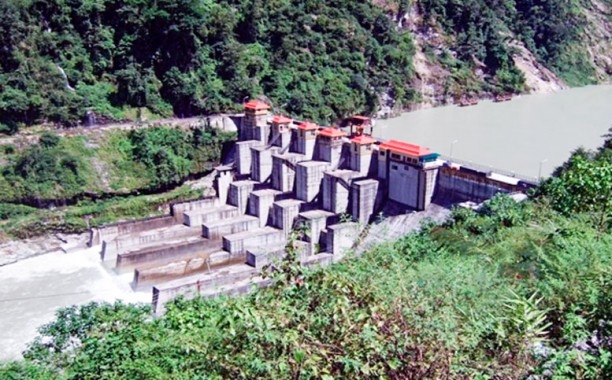




















Monday, Mar 09, 2020 10:45 [IST]
Last Update: Monday, Mar 09, 2020 05:17 [IST]
BIJAY BANTAWA
Who did discover the enormous potentiality of River first? The answer is the super-conscious mind and
Intelligence of human being that nature bestowed on for the natural growth of all being, importantly, for the growth and development of the human race on the earth. Historically, human civilization begun in the river basin and valley owing to the reason that the land around the river becomes fertile for the sustenance and growth of the plants and that there is abundance of eatable vegetation like fruits, banana, peach, paddy, green vegetable, this was the main reason that human habitation was concentrated on the banks of rivers at the beginning of civilization, the area being cultivable for the production of foods essential for the survival of human populace at large. Hence, the Sindhu, the Niles, the Amazon rivers and many important civilizations are found started in and around the rivers. In India, the Ganges, the river Beas, Jhelum, the Jamuna, Kaveri, the Brahmaputra and Teesta rivers keep significance for the development of many states of India and they still are of great economic importance. Besides, the irrigation system, hydropower generation, the rivers also play a significant role in eco-tourism and sustainable development and economic advancement in modern context throughout the world. In India there are innumerable river dams and hydroelectric power generation plants, among them, Nathpa Jhakri, operated by Satluj Jal Vidyut Nigam in Himachal Pradesh, Bhakra Nangal Dam operated by Himachal Pradesh and Karnatak Sardar Sarovar Dam in Gujarat, Nagarjuna Sagar Dam Guntur, operated by Andhra Pradesh so on and so forth.
During the British Regime in India, the hydro-electric power plants in the Darjeeling hill was established in 1898, while Foundation of Power (Energy) sector in Sikkim was founded on May 27 in the year 1927, the first micro-hydro project at Ranikhola with the installation of the generation capacity of 50 KW. The hydro plants were among the first in Asia and India and since then these plants played a dominant player in global hydroelectric-power- development.
India also imports surplus hydroelectric power from Bhutan. Following the inclusion of Sikkim in the mainstream of the Indian Union in 1975, the momentum of all-round development gained ground in Sikkim and the state government exploring the potential of river Teesta and innumerable rivulets started commissioning hydro project in Sikkim in a huge way bringing economic prosperity in Sikkim and the country after 1975 and more importantly during 1990 to 2019. There are many other hydroelectricity projects on the river Teesta on the pipeline. Originating from the Pahunri or Teesta Kangse glacier above 7,068 metres (23,189 ft), Teesta flows southward through valley and rapids in the Sikkim Himalaya. There are many tributaries that river Teesta passes through and crosses on its course in Sikkim right from Thangu, Yumthang and Donkha, Rongpoo, Kalimpong and main tributary Rangeet from Darjeeling hill, which is also known as lover’s meet point and now it has become one of the major tourist spots of Darjeeling hill and Sikkim. Teesta is also considered one of the holiest river of the state, traditionally, the Lepcha people offer prayer ceremoniously every year to river Teesta and similarly, the Hindu people take holy bath during the holy mighty Sankranti, thus religiously too river Teesta keeps importance for the people of Sikkim, Darjeeling and North Bengal. Teesta has become the hub of tourism attraction also following the launching of boating, kayaking and water sports, the source of income to the new generation too. Covering a distance of 315 km long-range, river Teesta rises in the eastern Himalays flowing through Sikkim and West Bengal through Bangladesh ultimately enters the Bay of Bengal It travels through the various places from Sikkim reaching to Rangpoo and Kalimpong and Darjeeling enters Jalpaiguri North Bengal and further Teesta joins the river Jamuna at Fulchhari in Bangladesh.
It is therefore no denying the fact that river Teesta is an important natural gift to the human being of the region. The Sikkim Himalaya, the glaciers, natural lakes and all the sources of water make the river Teesta and supply water to the people of the region up to Bangladesh.
In earlier times, the people used to travel from one place to another on the bank of rivers and discovered new places and the people and started a business despite lack of communication. Similarly, the road from Siliguri to Gangtok lies along the other side of the river Teesta from Seevok up to Singtam, East Sikkim the ancient trade route when the people used to travel on the back of horse or pony with their essential commodities and the road is constructed on the same route that still exists and no new road leaving the route is not constructed so far. The picturesque natural view on the bank of the river was fascinating for it was virgin land then, however, with the process of modernization taking place in a rapid pace, the natural beauty was gradually lost. There is no alternative road for Sikkim so far, it remains the only lifeline of Sikkim. In the past on numerous occasions, it was blocked by natural disaster and strike innumerable times. After widening the lane of the road, the road has facilitated the people to some extent for travelling and carrying essential commodities including the army movements in the border which also link China border via Nathula Sikkim, therefore the road along the side of Teesta river strategically important one, however, this is an unfortunate situation that this is only the road, no other alternative road has been constructed and if there will be natural calamities and landslides by fully blocking the road, there is no way out other, although railway service and construction of alternate road are on the pipeline. The only airport at Pakyong inaugurated by Prime Minister Narendra Modi is suspended from a long time ago and there is no green signal as yet.
The 10 National Highway along the river Teesta linking Sikkim with rest of the country is still not in good condition despite the financial assistance and work because of several factors. The Teesta Dam in several points have further eroded and damaged the road, the most vulnerable being the Galekhola area on 10 NH. The human habitation is prohibited by the power corporation with some compensation of money, however, some people are seen still occupying the land making a temporary settlement. At a stretch of 1 -2 kilometre, the other side of the road on river Teesta is frequently eroded due to the dam constructed by a hydropower project in West Bengal side. As a result, during the winter season also, there is a floodlike situation or the river is perennially filled with water endangering human habitation and most importantly deteriorating the road condition. In the recent car accident, where a family was plunged into the river after sliding the vehicle on the side of the rivers, the road is being eroded and sinking due to the construction of the dam. Earlier, there was no clogging of water, however, after the construction of the dam, the water level of the river rises round the clock and it the accident happens in such a situation, it will be very difficult to trace out the body of the victims or to save the persons immediately. As such, there is utmost need to arrange the disaster management team with life-saving boating system round the clock; the hydro plant operator and corporation taking the great responsibility in and around the most vulnerable point of the road along the river Teesta. There must be the arrangement to send the rescue team immediately to save the life of the persons who became the victim of such accident in such vulnerable and most dangerous points of Teesta basin.
